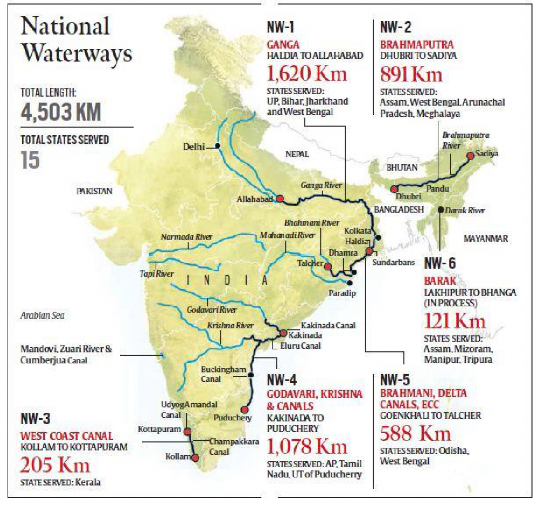6.4. Inland Water Transport
India has over 14,500 km of navigable waterways. Development of Inland Water Transport (IWT) infrastructure has several advantages, such as:
♤ Fuel efficiency
♤ Environmental friendliness
♤ Cost effectiveness
♤ Decongestion of road and rail networks particularly for movement of bulk goods and hazardous goods.
The Inland Waterways Transport (IWT) sector remained dormant for a long time and lost its relevance and importance in the overall transport sector. Considering its potential in terms of fuel savings, environment friendliness and cost effectiveness for transportation of bulk goods, dangerous goods, etc., it is necessary that wherever potential for IWT corridors exists, this
mode is developed with basic infrastructure so that its utilization is increased for transportation of cargo and passengers.
Various actions are being taken to develop IWT infrastructure and the focus is on cargo- related projects.. To provide a thrust to the IWT sector, the National Waterway Act, 2016 declaring 111 national waterways, including the 5 national waterways declared earlier has been enforced
w.e.f. 12th April, 2016. The process for preparation of techno economic feasibility (TEF) study/Detailed Project Report (DPR) of new national waterways is also initiated. As per the feasibility reports received so far, 32 new national waterways and five national waterways declared earlier are to be developed in the next three years.

Inland Waterways Authority of India (IWAI) was set up in 1986 for regulation and development of inland waterways for the purpose of shipping and navigation. As per The National Waterways Act, 2016, 111 waterways have been declared as National Waterways (NWs) including the five then existing NWs.
